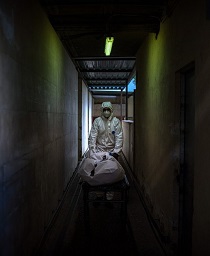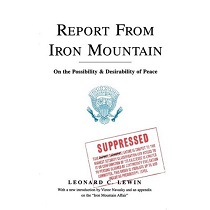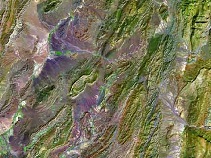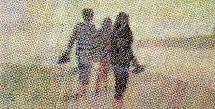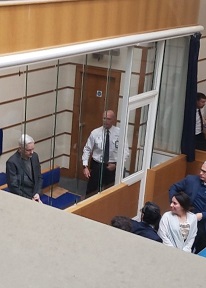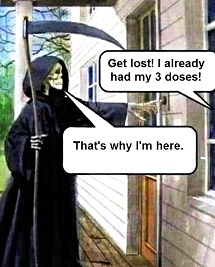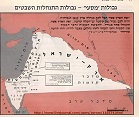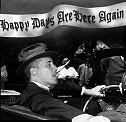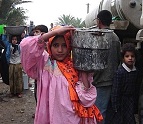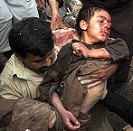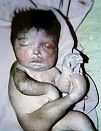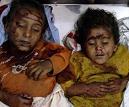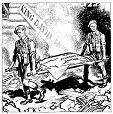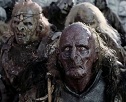The Use of Terrorism to Construct World Order
Ola Tunander
[This paper was prepared for submission] at the Fifth Pan-European International Relations Conference (Panel 28 Geopolitics) Netherlands Congress Centre, The Hague, 9-11 September 2004.
Securitization, Dual State and US-European Geopolitical Divide or The Use of Terrorism to Construct World Order
Abstract
In any state, certain areas are ‘securitized’ and by definition removed from the democratic political process. In an emergency situation – in short of war or terrorist attacks – the security sphere ‘invades’ the sphere of democratic politics. An autocratic security force or ‘security state’ appears to act in parallel to the regular democratic state, and this duality or ‘dual state’ was described by Hans Morgenthau already in 1955. After September 11, terrorism has become an instrument to ‘securitize’ what used to be public and tilt the ‘dual state’-balance in favour of the ‘security state’. The US ‘security state’ with its intelligence hegemony enters the scene as global protector that defines the world order in terms of a Pax Americana. Terrorism is used to construct a new world order. This development has been followed by mutual transatlantic accusations between European critiques and US neo-conservatives. According to the critiques, the Strategy of Tension, as we know it from Cold War Europe, has received a global dimension. During the Cold War, the US ‘dual security structure’ – with its specifically tasked units masquerading as ‘enemy forces’ – was developed by the US ‘security state’ in order to keep the political strength and the readiness and capability of the Western defences. Now, this structure has seemingly been made into a self-propelled mechanism that is able to transform the world order into a Pax Americana.
Introduction
In the USA, terrorism has replaced Communism as the new evil. In his famous speech on September 20 President George W. Bush promised to eliminate terrorism ‘and destroy it where it grows … and we ask every nation to join us’.1 This threat will be removed from our civilisation, he said and ‘we will pursue nations that provide aid or safe haven for terrorism. Either you are with us, or you are with the terrorists’.2 The US led antiterrorist ‘coalition of the willing’ is presented as a coalition for the 21 century replacing the structures of the Cold War. A new world order is emerging. President Bush’s speech on September 20, 2001, has been compared to the speech of President Truman 1947. Now, the Cold War is over, and the War on Terror has started.
Deputy Secretary of Defense Paul Wolfowitz said in May 2003: ‘If you had to pick the ten most important foreign policy things for the United States over the past 100 years [9.11] would surely rank in the top ten if not number one. It’s the reason why so much has changed’.3 Defense Secretary Donald Rumsfeld stated to the Armed Services Committee that Washington now views the world ‘through the prism of 9/11’.4 To the National Security Adviser Condoleezza Rice, 9.11 was an ‘earthquake’ that ‘has started shifting the tectonic plates in international politics’.5 While the Europeans are pre-occupied by economical and political coordination within the EU, the Americans are pre-occupied by terrorism and war.6 To the Europeans, September 11 has created a paranoid climate in the USA. I will present a few events.
On September 19 2001, a 342-page Anti-terrorist Act (later Patriot Act) was presented to Congress. It allows for surveillance, telephone tapping, and detaining immigrants indefinitely despite no clear link to terrorism. Books borrowed from libraries or bought in shops are to be reported7 (Electronic information on US citizens, credit accounts, e-mails, travels, book purchase, phone conversations, was supposed to be collected in giant Defense Department database at the office of Total Information Awareness run by Admiral John Poindexter).8 In November, President Bush signed an executive order blocking public access to White House papers after 1980,9 and he issued an executive order on military tribunals for suspected terrorists. FBI Director Mueller said: ‘There is a continuum between those who express dissent and those who would do a terrorist act’.10 The CIA received legal authority by the president to assassinate alleged terrorists all over the world, even Americans. ‘No constitutional question is raised here’, Condoleeza Rice says.11
After September 11, the US ‘democratic state’ (characterised by openness, legal procedures and free elections) is forcefully supported by or rather subsumed under a US ‘security state’ (characterised by secrecy and military hierarchy). Much of public life is ‘securitized’12 and the president and his close advisers are focused on the War on Terror, not on civilian matters. ‘I am a war president. I make decisions … with war on my mind’, President Bush said.13 The security aspect of the state is invading the public sphere as if we were entering a creeping state of emergency. ‘Emergency power’14 is used to direct the policy of the democratic state. In 1955, Hans Morgenthau wrote about a US ‘dual state’ in a study of US State 3 Department.15 According to Morgenthau there was both a ‘regular state hierarchy’ that acts according to the rule of law and a more or less hidden ‘security hierarchy’, or what I will call a ‘security state’ (in some countries called ‘deep state’16) that acts in parallel to the former, while it monitors and controls the former. The latter ‘exert an effective veto over the decisions’ of the regular state, to quote Morgenthau.17 The ‘democratic state’ and the ‘security state’ always ‘march side by side’,18 and while the ‘democratic state’ offer legitimacy to security politics the ‘security state’ intervenes if necessary by limiting the range of democratic politics. Others would argue that the activity of the ‘deep state’ or ‘security state’ not just concerns the veto of democratic decisions but also the ‘fine tuning of democracy’,19 for example by ‘fostering’ the war or the limited war in order to externalize conflicts and provide internal stability. The ‘security state’ is able to calibrate or manipulate the policies of the ‘democratic state’. The ‘security state’ decides over life and death, it is always present, and it will act in case of ‘emergency’. This apparatus defines when a ‘state of emergency emerge’. This is what Carl Schmitt would call the ‘sovereign’,20 and by ‘securitizing’ the political life, the democratic state looses its influence. After September 11, the US administration has securitized what used to be public and tilted the balance in favour of the ‘security state’. To many Europeans, the new US policy is difficult to understand. The Guardian and BBC say that the ‘Big Brother will be watching America’.21
In contrast, the Europeans look at terrorism and security threats in a different manner. In February 2003, Pieter Feith, EU’s Deputy Director for External and Political Military Affairs, presented the European Foreign and Security Policy, but he mentioned terrorism only once, in one sentence.22 A 2003 draft contribution to the new EU security strategy discussed terrorism in one sub-point of 46 points,23 while the actual strategy (signed by Javier Solana, EU High Representative for the Common Foreign and Security Policy) uses almost two of sixteen pages to discuss terrorism.24 This may represent a European change or perhaps a try to appease the Americans. The SIPRI Director and former British Ambassador Alyson Bailes writes: ‘Terrorism for us is also typically an internal affair, an all-too-familiar historical legacy, which cannot be attacked with methods of war without exploding our whole societies. It is a matter for long imperfect medical cures rather than for sudden surgery’.25
Europeans have been living with terrorism from the 19th century and even more so from late 1960s to mid-1980s. The 1970s was a decade of terrorism with thousands of terrorist operations, with kidnappings, hijackings and bomb explosions and with thousands dead civilians. The Black September, the Red Army Faction and the Red Brigades were as famous as al-Qaeda is today. For the Europeans, September 11 does not imply a major change. More important, however, a majority of the Europeans (55%) believe that US policy contributed to and indirectly is responsible for the September 11 attack.26 US policy with several billion dollar support to Israel and, in the 1980s, to Osama bin Laden and his mujahideen have created a strong terrorist force nurtured by US military presence in Saudi Arabia and by the US war in Iraq. Several Muslim countries view the USA as more dangerous to peace and stability than al- Qaeda. In Jordan 71% hold this view, 83% have an unfavourable view of 4 the USA, and 97% of the population opposes the US ‘War on Terror’, while Osama bin Laden is considered the second most popular figure supported by 55% of the population. These anti-US feelings are representative for several other Muslim countries. In Pakistan, in October 2001, 82% considered Osama bin Laden a Mujahid [fighter] not a terrorist and 83% were siding with the Taliban against the USA. In Indonesia 83% are unfavourable to the USA and 66% consider the USA as more dangerous to world peace than al-Qaeda.27 In a European Commission poll made in October 2003, a majority of the Europeans viewed Israel as the biggest threat to world peace (59%) followed by the United States and countries like Iran, North Korea, Afghanistan and Iraq.28 A majority of the Europeans seem to believe that the US policy rather provokes terrorist reactions and indirectly is responsible for the terrorist activity, while the Americans focus on the destruction of terrorist training camps and the destruction of regimes that harbour terrorist groups. Europeans and Americans are, to quote Robert Kagan, living on different planets.29
Terrorism and US-European Mutual Accusations
This US-European clash in political views is supplemented with a more cynical criticism. Die Zeit writes that one of every third German below the age of 30 and almost 20% of all Germans believe that US authorities facilitated or directly contributed to the September 11 attack in order to use it for their own purpose.30 In 2002-2003, seven German books appeared that presented evidence supporting this hypothesis – one book was written by Helmut Schmidt’s state secretary for defence and former minister, Andreas von Bülow.31 Von Bülow (for many years the MP responsible for oversight of German intelligence services) stated in Tagesspiegel that he believed that the CIA was involved in the September 11 attack, and many influential people ‘agree with me, but only in whispers, never publicly’, he said.32 Michael Meacher, British MP and Tony Blair’s minister for environment up to June 2003, writes a forward to a book: The New Pearl Harbor. Also this book points to a direct US involvement in the September 11 attack. This operation was allegedly conducted to justify a war against Afghanistan and Iraq, in order to construct a new enemy able to replace the Soviet Union.33 Von Bülow and Meacher also stress that September 11 made it possible to introduce something of a ‘state of emergency’ able to justify a number of extra-ordinary measures to facilitate US domestic reorganisation. The experience of a US government exploiting the tragedy of September 11 in its try to force European states to participate in one US war after the other (Afghanistan, Iraq) have been met by strong European reactions.
However, there may be several reasons for this more cynical European approach. Recently declassified US documents from February 1962 show that US Joint Chiefs of Staff proposed to run a terrorist campaign planting explosives in US cities to justify a war against Cuba. The US chairman of Joint Chiefs of Staff General Lyman Lemnitzer 5 proposed that secret US forces could play ‘Cubans’ and sink a US Navy ship at Cuba, attack the US Navy base (Guantanamo), burn a US airplane on the base, and start a terrorist campaign with bomb explosions in US cities including Washington, all to blame Cuba to justify a massive US invasion. They could let a fake civilian aircraft bee shot down over Cuba. According to Lemnitzer, one option was ‘exploding a few plastic bombs in carefully chosen spots [in US cities], the arrest of Cuban agents and the release of prepared documents substantiating Cuban involvement.’34 The CIA set up a ‘terrorist training camp’ in North Carolina, where thousands of CIA agents, Special Forces and foreign nationals (including Cuban exiles, Israelis, Nicaraguan Contras, Palestinians and Arab Islamists) from 1960s until today learned how to use home-made explosives and pressurized airplane bombs, and how to conduct other terrorist operations. We used home-made explosives (fertilizers), self-made napalm and Molotov cocktails as well as plastic explosives, which I had to use against an old school bus, one former CIA agent told.35
Recent trials in Italy have established that the bombing campaign in Italy in the 1960s and 1970s and probably elsewhere in Europe was run not by various leftwing groups as one believed at the time, but, in accordance with a ‘Strategy of Tension’, by so-called Nuclei di Difesa della Stato (Nuclei of Defence of the State or NDS). These ‘parallel Stay-Behinds’ were established from mid 1960s by the US and Italian ‘security state’ after a directive made by General William Westmoreland to stop Communism by all means. Their activists and intelligence assets were recruited from extreme fascist organisations of Ordine Nuovo and Avaguardia Natzionale. They carried out a bombing campaign, while they masqueraded as leftwingers, as anarchists and Maoists, in direct collaboration with the CIA and with factions of the Italian intelligence and security services. Carlo Digilio belonging to the CIA net in Italy, told the court that he collaborated with fascist intelligence assets in Ordine Nuovo and the bombing campaign was linked to a US plan to introduce a state of emergency in Italy in order to exclude the political left from government. The same view was presented by the Italian chief of counter-intelligence, General Gianandelio Maletti, and he confirmed in court that the CIA had provided the extreme fascist group Ordine Nuovo with explosives for the bomb attack in Milano in 1969. Digilio reported about upcoming bomb attacks to his American CIA contact Captain David Carret, who told him that the bombing campaign was part of a US plan for a state of emergency to control Italian domestic politics.36
From 1974, after the arrest of the old leftwing leadership in the Red Brigades, secret service and military intelligence agents that already had penetrated the Red Brigades received vital positions in the organisation, which has been confirmed by General Maletti and others.37 This change was followed by a ‘blind terror’ and a radical increase in the number of attacks.38 All major terrorist operations from the 1960s to the 1980s, by the Red Brigades and other groups, were seemingly conducted in collaboration with US intelligence, or with US ‘groups on the fringes’ of the official services, in order to manipulate public opinion and to limit the range of the democratic discourse. During the official visit to the USA in 1974, Prime Minister Aldo Moro told his wife that a senior US official had threatened to 6 use the ‘groups on the fringes’ of the official services to kill him ‘if he did not abandon his policy’ of a ‘historical compromise’ with the left.39
Several scholars emphasize that the US policy of masquerading as terrorists – to increase the awareness of a security threat – is a policy that was clearly expressed in US documents. A supplement to a US Army Field Manual 30-31B from 1970 (signed by General Westmoreland) discussed in detail the policy of penetrating left-wing groups to instigate violence. The document states that Host Countries (HC) may be ‘lulled’ into a ‘state of false security’:
In such cases, US Army intelligence must have the means of launching special operations which will convince HC governments and public opinion of the reality of the insurgent danger and of the necessity of counteraction. To this end US Army intelligence should seek to penetrate the insurgency by means of agents on special assignment, with the task of forming special action groups among the more radical elements of the insurgency … to launch violent and nonviolent actions according to the nature of the case … it may help towards the achievement of the above ends to utilize ultra-leftist organisations.’40
In the 1960s, 1970s and 1980s, US forces used terrorism as an instrument to control European domestic politics – the Strategy of Tension – to establish a US hegemony, and former ministers like von Bülow and as many as 20% of the Germans seem to believe that the same process is going on today, but instead of using ultra-leftist groups the Americans prefer to use radical Islamists. Von Bülow points to a large amount of evidence supporting this hypothesis, and similar to the US Cold War terrorist campaign in Europe, today’s terrorism justifies US interventions as a protector, while other states are made into ‘protectorates’ under US supervision.
A catastrophic attack on the USA was presented as favourable by both Donald Rumsfeld and Paul Wolfowitz in the year before September 11. In August 2000, Wolfowitz et al. underlined that a necessary transformation of the US forces will be a long one ‘absent a catastrophic and catalysing event like a new Pearl Harbor’. Such a catastrophic event would justify increased defence spending described as a pre-condition for reaching the strategic goal: a Pax Americana.41 In the ‘Space Commission Report’ from January 2001, Rumsfeld et al. described a new Pearl Harbor as ‘the only event able to galvanise the nation and cause the US Government to act’.42 Rumsfeld said in October 2001 that the only way to deal with terrorism ‘is to take the battle to the terrorists, wherever they are’,43 but such a military intervention presupposed an event like September 11. Wolfowitz argued before the 9/11 Commission that if the DOD had gone to Congress before 9/11 and asked to invade Afghanistan, they would never have been taken seriously.44 A devastating event like September 11 was in major strategic documents and in statements by leading representatives presented as an advantage if not a necessity to reach US strategic goals. A catastrophic terrorist event was perceived as an ideal vehicle to transform US security forces to make them capable of preventing an even more devastating nuclear or chemical attack, which might ‘kill hundreds of 7 thousands’ or ‘potentially millions people’, to quote Rumsfeld.45 ‘We don’t have the luxury of making a mistake that big today’, he added.46
Von Bülow as well as the British MP Michael Meacher argues that a ‘new Pearl Harbor’ like the September 11 attack was not just perceived by US leaders as a strategic necessity. The US leadership actively facilitated or contributed to such an event. One problem concerns the ‘creation’ of Osama bin Laden and his mujahideen. During the 1980s, bin Laden’s forces were supported and trained by the CIA, the Saudis and the Pakistani military intelligence service ISI.47 They all kept regular contact with his forces at least up to 2001.48 Bin Laden’s mujahideen collaborated with the Americans in Bosnia in early and mid-1990s, in Kosovo in late 1990s and in Macedonia in 2001. While Osama bin Laden was turned into a major US enemy, his al-Qaeda forces were still integrated in the US supported KLA in Kosovo, and they received modern US equipment for their operations in Macedonia as late as in Spring 2001.49 In Afghanistan in late 1990s, al- Qaeda had established a symbiotic relation to the Taliban, and the Taliban was nothing but an instrument of the US special ally, the ISI, with Pakistanis acting as military advisers and as ‘Taliban’ officials responsible for its diplomatic correspondence.50 Despite intelligence information about al-Qaeda ties, hijackers received US visas. 15 of the 19 hijackers received their visas at US consular office in Jeddah, Saudi Arabia.51 The head of this office in late 1980s, Michael Springman, stated that he wanted to turn down this kind of applications but he was forced to issue the visas after direct intervention by high level US officials. He says that we brought about hundred ‘recruits, rounded up by Osama Bin Laden, to the US for terrorist training by the CIA’.52 Several of the WTC hijackers were later trained at US military installations53 as if these hijackers had high level US support. At the same time, in the spring and summer 2001, a large amount of detailed and documented warnings were given to the US leadership, but no measures were taken. FBI and CIA field agents and a number of foreign intelligence services, presidents and prime ministers informed the US leadership of an upcoming al-Qaeda attack with airliners against US targets – some were specific about time and the World Trade Center – but the US leadership did never ask for further information.54 Within sections of the FBI, the identity of some of the hijackers as well as the information about the upcoming ‘air attack on lower Manhattan’ was common knowledge, but no measures were taken.55
Von Bülow and other critiques also point to hundreds of other arguments for US complicity. On September 10, a number of Pentagon officials cancelled their air trips because of ‘security concerns’, and the San Francisco Mayor Willie Brown received a phone call from his security section eight hours before the hijacking. He was advised not to travel by air.56 Von Bülow also questions why the air defence authorities (NORAD) on September 11 did not follow standard operating procedures to intercept airplanes immediately when diverting from their given course. In year 2000-2001, this happened several times a week. The fact that this did not happen on September 11 (until it was too late) has been described as remarkable.57 They also argue that the World Trade Center complex could never have been brought down by the aircraft, and the New York Fire Department reported a number of explosions inside the World Trade Center 8 buildings, which are confirmed by videos.58 Each building collapsed vertically in almost ten seconds (close to free fall) as if they were brought down by controlled demolition, not by the aircraft and the fire. Construction engineers and physical scientists argue that the fires from the aircraft would never have had enough impact to force the towers to collapse.59 The fact that World Trade Center 7 collapsed cannot be explained by the airplanes. Someone seems to have given the ‘hijackers’ and helping hand. To von Bülow and others this is a strong indication of a US military operation or intelligence operation. Such a catastrophic event was believed in every respect to be very useful to the Bush Government. It radically increased the support for the President. It was followed by a radical military build-up as a pre-condition for a Pax Americana, and it made it possible for the US Administration to take ‘the battle to the enemy’ before a nuclear terrorist attack would kill ‘hundreds of thousands’ or even ‘millions’, to quote Rumsfeld.60
The very opposite to von Bülow’s view is presented by the conservative Michael Ledeen holding the Freedom Chair at the American Enterprise Institute. He was international affairs adviser to President George W Bush’s closest adviser Karl Rove, 61 he is a co-founder of the Jewish Institute for National Security (JINSA), and a former terrorist adviser to US state secretary Alexander Haig. Ledeen argues that the German and the French governments have allied with radical Islam and with the Arab extremists to bring down ‘American domination before it takes stable shape’:
[T]he French and the Germans struck a deal with radical Islam and with radical Arabs: You go after the United States, and we’ll do everything we can to protect you, and we will do everything we can to weaken the Americans. The Franco-German strategy was based on using Arab and Islamic extremism and terrorism as the weapon of choice, and the United Nations as the straitjacket for blocking decisive response from the United States.62
Ledeen may be a less credible source.63 According to Admiral Fulvio Martini, Italian chief of Military Intelligence (1984-1991), Ledeen belonged to the groups on the ‘fringes of the CIA’. His activities in Italy in the 1970s and 1980s, in collaboration with a faction of Italian Military Intelligence, made Martini declare him unwelcome in Italy.64 This does not imply that Ledeen is involved in the present terrorist activities. However, it is still important that on the one hand Ledeen, with his prominent role for the Bush Administration,65 and on the other hand, former German state secretary for defence, von Bülow, accuses the other side of using terrorism as an instrument of their respective grand strategy. Both these prominent former civil servants accuse the other side of using terrorism to construct a new world order.
‘Dual State’ and ‘Dual Security Structure’
The information about CIA’s terrorist campaign in the Europe and US military proposals for a terrorist campaign in the USA was not uncovered until 30 or 40 years afterwards, and it may take another 30-40 years before we know what is going on today. During the Cold War the USA developed a security system that included both sides of the conflict – not only the defence against terrorist action but also the infrastructure and organisation to carry out terrorist attacks – in order to manipulate mass media and increase the public awareness and political and military readiness against a Soviet attack. This also meant that the US intelligence established local ‘security states’ all over Europe and tried to introduce a state of emergency in some countries to limit the range of the democratic discourse to exclude Socialist and Communist parties from the government. The US policy was to penetrate ultra-leftist organisations in Europe and perhaps elsewhere to launch violent (and non-violent) actions to make the governments and the public aware of the Soviet threat. The US policy was not just to infiltrate and monitor the extremist groups but ‘to instigate acts of violence’, to quote the Italian counter-intelligence chief General Maletti.66 This discourse played an important role for several decades. From the early 1960s, the US military leadership and the CIA prepared to use its own secret forces for attacking US and allied property or personnel in order to blame enemy forces or political opponents to justify a war against or a clamp down on these political forces.
During the Cold War, the USA developed a ‘dual security structure’ that included a real visible threat towards your own defensive forces to raise the awareness, readiness and capability of states that had been ‘lulled into false security’, and the USA considered itself to be responsible for the whole Western world. Former US defense secretary Caspar Weinberger said that the USA, in the 1980s, had specifically tasked units that played enemy forces and secretly attacked Western defences worldwide in order to ‘regularly’ and ‘frequently’ test their capability and increase their readiness and to develop counter-forces already before a certain Soviet capability will emerge.67 With reference to US/UK covert submarine operations in Swedish waters in the 1980s, Weinberger stated: ‘it was necessary to test frequently the capabilities of all countries, not only in the Baltic [Sea] – which is very strategic of course – but in the Mediterranean and Asiatic waters and all the rest…. And it was not just done in the sea. It was done on air defences and land defences as well ... and all this was done on a regular basis and on an agreed upon basis’.68 The US ‘security state’ in collaboration with local security elites tested the defensive capability of Western democratic states worldwide. In that sense, there is a correspondence between the ‘dual state’ and the ‘dual security structure’.
Similar to the terrorist campaign in Italy and in other European countries in the 1960s-1980s, Rear-Admiral James Lyons, Deputy Chief of Naval Operations for Plans, Policy and Operations, set up a ‘terrorist unit’ in 1984, the Red Cell, recruited from his own naval Special Forces (SEAL Team Six) that attacked naval bases worldwide. They planted bombs, wounded US personnel and took hundreds of hostages. It was, according to Lyons, necessary that US forces got ‘physical’ experience of the terrorist 10 threat to ‘raise the awareness’ to prevent an even more devastating attack.69 The USA developed a security system that included both sides of the coin, and after the Cold War, with the loss of the Soviet threat, many Europeans may consider that this ‘dual structure’ with its specifically tasked terrorist units have become an instrument to establish an American hegemony as well as an internal stability. War is no longer carried out between the large armies of major powers but by ‘special units’ in order to create ‘a special mental atmosphere … to keep the structure of the society intact’, to quote George Orwell in 1984.70 The Islamic terrorists are by von Bülow and others understood as ‘useful idiots’ that US top-officials are using for its own hegemonic purpose.
This means that now, when the Cold War history of European terrorism has become more visible, we have to look more in detail into today’s Muslim terrorism including al-Qaeda and Osama bin Laden. The White House has consistently acted as if al-Qaeda terrorist were both friendly intelligence assets and enemy forces (see above). In October 2001, in the Afghanistan war, US military forces had rounded up a large Taliban and al-Qaeda force in Kunduz 250 km from the Pakistani border. But Pentagon or the White House intervened and let the Pakistani Army open an air corridor, and ‘in a series of nightime airlifts … [the Pakistanis flew out] an unknown number of Taliban and al-Qaeda fighters’. For three nights, Pakistani (Hercules) transport aircraft flew out Pakistani volunteers, Taliban and al-Qaeda fighters and leaders as well as a number of ISI officers and two Pakistani generals, because ISI and Pakistan are close US allies.71 The loosing enemy forces were saved by the US leadership as if one wanted to keep a significant enemy in order to calibrate the threat. The distinction between war and exercise has been blurred. We have to ask ourselves: To what extent are US and perhaps other Western intelligence services able to calibrate terrorist operations and able to profit from them in an attempt to manipulate public opinion and governments – as a ‘fine tuning of democracy’72 – by creating a ‘creeping state of emergency’ that limits the democratic discourse? In other words, to what extent has the ‘dual security structure’ made use of terrorist groups and developed into a self-propelled mechanism as a replay of the Strategy of Tension from the 1960s-1980s? But now on a larger scale without a Soviet threat.
It is now generally accepted that the September 11 event was a precondition for launching the policy that Wolfowitz et al. already had presented in various documents. September 11 has certainly also been used by the US Government to re-organize international politics and to force various states to adapt to the terrorist threat and to adapt to US counterterrorism operations that might penetrate these states. We also know that official Defense Department documents propose the use of a ‘Pro-active Preemptive Operations Group (P2OG)’ to fuse covert action, intelligence and deception world-wide to ‘stimulate terrorist reactions’ or terrorist operations by ‘prodding terrorist cells into action’ to ‘signal to harboring states that their sovereignty will be at risk’.73 US stimulation of terrorist operations worldwide will justify US interventions where this terrorist activity takes place. The Americans will feel free to intervene in countries harbouring terrorists. The CIA and US Special Forces are given access to these countries, because the local security services have not thstronge relevant 11 capacity. The USA enters the scene to remove regimes harbouring terrorists and to protect allies against an evasive enemy that threatens the civilian order. One state after the other is made into a protectorate.
This means that a new pattern is about to emerge. US superior military strength and intelligence hegemony can only be transformed into power and real global strength if there are conflicts – wars and terrorist attacks – that threaten the multipolar world order of the civilian economicpolitical system. While the civilian economic-political power structure with the USA, the EU, Japan and China has no single leader, the militarypolitical structure has, and the more violent discourse the USA is able to present, the less competition will the USA meet from other powers. Only by countering terrorism worldwide and by military interventions against various rouge states are the USA able to profit from its military-intelligence hegemony and transform the global system into a unipolar Pax Americana. But this policy may weaken Europe’s traditional solidarity with the USA and possibly presuppose US use of terrorist groups to target Europe and East Asia in the years to come. Otherwise, these terrorist attacks may be interpreted as a reaction to US policy, as in the case of the Spanish 2004 election. If the Europeans will suspect a US collaboration with terrorist groups – similar to what happened during the Cold War in the years of the Strategy of Tension – this policy will most likely lead to a backlash.
However, if the USA will be able to carry out a successful Strategy of Tension, the Europeans may have to follow suit to receive some favours. The European ambition to put restraint on the use of force and to take decisions according to international law would then have been sidestepped. In other words, the Europeans would then have been forced to accept a more militarised global system, which certainly means a US unipolar world order. The Europeans would then try to counter the US move by making a less dramatic assessment of the terrorist threat and by giving priority to political coordination and economic development rather than to the US favoured counter-terrorist operations and military interventions. However, it is the USA and not the Europeans that will decide on the level of violence. The Europeans may have to adapt to the American policy similar to what happened during the Cold War and similar to what now seems to happen in Southeast Asia.74
___________________________________________________________________________________
Ola Tunander is a Research Professor at the International Peace Research Institute, Oslo (PRIO) and was for several years heading its Foreign and Security Policy Program. He received a PhD in 1989 for a dissertation on geopolitics and US maritime strategy. He is the author, editor and co-editor of several books on history, geopolitics, political philosophy and military strategy. Tunander has lectured at universities, military staff schools and ministries, and he is currently heading a project on transatlantic relations and one project on terrorism and European security identity. PRIO e-mail: ola@prio.no
___________________________________________________________________________________
1 George W. Bush, 2001. ‘Address to a Joint Session of Congress and the American
People’, United States Capitol, Washington DC
(http://www.whitehouse.gov/news/release/2001/09/print/20010920-8.html).
2 Ibid.
3 Deputy Secretary Wolfowitz, interview with Sam Tannenhaus, Vanity Fair, US
Department of Defense, Defense Link, May 9, 2003, p. 1 (see
www.defense.gov/transcript/2003).
4 ‘Prepared Testimony by US Secretary of Defense Donald H. Rumsfeld, Senatre Armed
Services Committee, July 9, 2003, pp. 5-6.
5 Quoted in Nicholas Lehman, 2002. ’The Next World Order’, The New Yorker, April 1.
6 Robert Kagan, 2003. Of Paradise and Power – America and Europe in the New World Order. New
York: Alfred A. Knopf.
7 Seth Rosenfeld, 2002. ‘9-11-01 Looking Back, Looking Ahead – A nation remembers
Patriotic Act’s scope, secrecy ensnare innocent, critics say’, San Fransico Chronicle,
September 8; See also Nafeez Mosaddeq Ahmed, 2002. ‘Did Bush know? – Warning Signs
of 9-11 and Intelligence Failures’, May 18
(http://www.mediamonitors.net/mossadeq36.html).
8 Suzanne Goldenberg, 2002. ‘Big Brother will be watching America – Giant information
matrix to track movements of potential terrorists’, The Guardian, November 23; Hendrik
Hertzberg, 2002. ‘Too Much Information’, The New Yorker, December 9; Justin Webb,
2002. ‘US eyes Big Brother plan’, BBC, December 12.
9 Sarah Left, 2001. ‘Bush blocks public access to White House papers’, The Guardian,
November 2.
10 Sean Webby, 2002. ‘Stanford honors FBI chief – Awards recognizes Mueller’s work in
law. The Mercury News, October 19.
11 John L. Lumpkin, 2002. ‘CIA Target: Americans – Officials: US Citizens Working for
Al Qaeda Can Be Killed in CIA Action’, The Associated Press, November 3.
12 Wæver, Ole, 1995. ‘Securitization and Desecuritization’, in Ronnie D Lipschutz, ed., On
Security. New York: Colombia University Press.
13 President George W. Bush quoted in BBC News, ‘Bush sets case as a “war president”’,
February 8, 2004.
14 Jules Lobel, 1989. ‘Emergency Power and Decline of Liberalism’, The Yale Law
Journal, vol. 38, s. 1,385-1,433.
15 Hans J. Morgenthau., 1962. Politics in the Twentieth Century. Vol 1 The Decline of
Democratic Politics. Chicago: University of Chicago Press (Chapter 29: ‘The Corruption
of Patriotism’), p. 400. (This article was also published already in 1955 in the New
Republic and in the Bulletin of the Atomic Scientists).
16 In Turkey but also elsewhere the concept of ’deep state’ is used frequently for a kind of
security structure able to operate outside the law. See for example RAND Conference
Proceedings ’Turkish Society and Foreign Policy in Troubled Times’, by Shahram Chubin
& Jerrold D. Green, Geneva, Switzerland, April 25-27, 2001 (Center for Middle East
Public Policy & Geneva Center for Security Policy).
17 Hans J. Morgenthau., 1962, p. 400.
18 Licio Gelli argued about Italy: ‘dictatorship and democracy always march side by side,
because democracy is being undermined by dictatorship and dictatorship is being
undermined by democracy. [We haven’t yet] reached an equilibrium.’(quoted in Philip
Willan, 1991. Puppet Masters – The Political Use of Terrorism in Italy. London:
Constable, p. 211)
19 One Turkish ’general famously called it the ”fine tuning of democracy”’ (Ralph Boulton,
2003. ‘Turkey’s new govt faces challenge’, Dawn, 30 January).
20 Carl Schmitt, 1985 [1922]. Political Theology. Cambridge MA: MIT Press.
21 Suzanne Goldenberg, 2002. ‘Big Brother will be watching America – Giant information
matrix to track movements of potential terrorists’, The Guardian, November 23; Justin
Webb, 2002. ‘US eyes Big Brother plan’, BBC, December 12.
22 Pieter Feith, Dep. Director General, External and Politico Military Affairs, the EU, ‘The
Security Policy Scene after the Summits of Copenhagen and Prague including the
Development in the Middle East’ (The Norwegian Atlantic Committee), the 38
Leangkollen Conference, Oslo, 3 February 2003.
23 A European Security Concept for the 21st Century, Royal Institute for International
Relations, Brussels, October 2003.
24 Javier Solana, 2003. A Secure Europe in a Better World. EU High Representative for the
Common Foreign and Security Policy, European Council. June 20, Thessaloniki..
25 Alyson Bailes, 2002. ‘US, NATO and Europe: Is there Still a Common Agenda?’ (Talk
at the Cicero Foundation, Paris, 12 December 2002).
26 Craig Kennedy & Marshall M. Bouton, 2002. ‘The Real Trans-Atlantic Gap’, Foreign
Policy, Nov-Dec, pp. 66-74.
27 Meg Bortin, 2003; The Pew Research Center, 2003; BBC News, 2003. ‘Poll suggests
world hostile to US’, June 16; Roy Morgan International, 2001. ‘International Gallup Poll,
October 8, 2001 – Pakistan Divided on Afghanistan Conflict’.
28 EUOBSERVER, 2003. ‘Poll controversy as Israel and US labelled biggest threats to
World pace’, October 30 (MIFTAH’s Dialogue & Instant Polls).
29 Robert Kagan, 2003, p. 3.
30 Die Zeit, 24 Juli 2003, no 31 (http://www.presseportal.de/print.htx?nr=465778).
31 Andreas von Bülow, 2003. Die CIA und de 11 September – Internationaler Terror und
die Rolle der Geheimdienste. Piper; Gerhard Wisnewsky, 2003. Operation 9/11. Angriff
auf den Globus. Droemer/Knaur; Thierry Meyssan, 2003. Das Pentagate – Fragenkatalog
zu einer Inszenierung. Editio Defacto; Nafeez M Ahmed, 2003. Geheimsache 09/11.
Rieman; Christian Guthart, 2002. 11 September – Ein Untersuchungsbericht. SKD
Bavaria; Thierry Meyssan, 2002. 11 September. Der inszenierte Terrorismus. Auftakt zum
Weltenbrad? Editio Defacto; Arnold Schölzel, 2003. Das Schweigekartell – Fragen &
Wiederspruche zum 11 September. Berlin: Homilius.
32 Andreas von Bülow interviewed by Stephan Lebert & Norbert Thomma in Der
Tagesspiegel, 13 January 2002.
33 David Ray Griffin, 2004. The New Pearl Harbor – Disturbing Questions about the Bush
Administration and 9/11. (Adlestrop: Arris Books). (see also US edition: Northampton (MA): Olive
Branch Press).
34 Joint Chiefs of Staff memorandum on Operation Northwoods for the Secretary of
Defense from 13 March 1962 (Memo for Secretary of Defense by JCS, 13 March 1962),
signed by Chairman of Joint Chiefs of Staff, General Lyman Lemnitzer, National Security
Archive (declassified in 2001).
35 The ‘US Cubans’ were trained in the use of explosives and underwater demolition in a
camp in North Carolina, Harvey Point Defense Testing Activity, which the CIA took over
from the US Navy in 1961. (Jon Elliston, 2002. ‘Bomb School’, The Independent Weekly,
June 5, Independent Online: http://www.indyweek.com/durham/2002-06-05/cover.htm).
The CIA veteran Robert Baer describes how he learned to blow things up, cars and buses,
by the use of US C-4 plastic explosives and by the use of Czech Semtex and a other foreign
plastic explosives. ‘We blow up [sic] one bus using three sacks fertilizers and fuel oil….
By the end of training, we could have taught an advanced terrorist course’ (Robert Bear,
2002. See No Evil: The True Story of a Ground Soldier in the CIA. New York: Random
House, p. 31).
36 From late 1960s, the activists from Ordine Nuovo and Avanguardia Nazionale, started to
penetrate leftwing organisations and launch a bombing campaign, which continued in the
1970s. Agents linked to the CIA with the Italian Giovanni Bandoli, Carlo Diglio and
Sergio Minetto and the US Navy Captain David Carret and his replacement in 1974,
Captain Theodore Richard, facilitated the terrorist activity of the Nuclei di Difesa della
Stato (Tribunali Civile e Penale di Milano, 1995-2001 (Sentenza – ordinanza del Guidice
Istruttore presse il Tribunale Civile e Penale di Milano, dr Guido Salvini, nel procedimente
penale nei confronti di ROGNONI Giancarlo ed altri, 1995-2001).
(http://www.strano.net/stragi/tstragi/salvini/index.html). Fabricio Calvi & Frederic
Laurent, 1997. Piazza Fontana – La verità su una strage. Milano. About General
Gianandelio Maletti’s statements, see Philip Willan, 2001. ‘Terrorists “helped by the CIA”
to stop rise of left in Italy’, The Guardian, March 26; see also Franco Ferraresi, 1996.
Threats to Democracy – The Radical Right in Italy after the War, Princeton: Princeton
University Press; and Jeffrey McKenzie Bale, 1994. The “Black” International – Neo-
Fascist Paramilitary Networks and the “Strategy of Tension”, Doctoral Dissertation, UMI
Dissertation Service, Ann Arbor, Michigan. See also BBC Special, ‘Gladio Part I-III, June
1992.
37 Maletti quoted in Philip Willan, 1991. Puppet Masters – The Political Use of Terrorism
in Italy. London: Constable, p. 199. See also interview with Fedricio Umberto D’Amato,
former chief of the Interior Ministry Division of Special Affairs (secret service), in BBC
Special, ‘Gladio Part III, The Foot Soldiers’ (10 June 1992)
38 See Ferraresi, 1996.
39 Quoted in Philip Willan, 1991, p. 220. See also the statement made by Aldo Moro’s wife
for the Italian Parliament, BBC Special, ‘Gladio Part III, The Foot Soldiers’ (10 June
1992).
40 Field Manual 30-31, Supplement B, Headquarters, Department of Army, Washington
DC, March 10, 1970 (The document was declassified in May 2001 in accordance with the
Freedom of Information Act).
41 See PNAC [Wolfowitz at al], 2000. ‘Rebuilding America’s Defenses – Strategy, Forces
and Resources for a New Century’, A Report of the Project for a New American Century,
September, pp. 50-51.
42 Report of the Commission to Assess United States National Security Space Management
and Organization under chairmanship of Donald H. Rumsfeld to the Committeeon Armed
Servicesof the US House of Representatives, January 11, 2001, p. xv.
43 Donald H. Rumsfeld quoted in ‘Secretary Rumsfeld Interview with Parade Magazine’,
United States Department of Defense, October 12, 2001
(http://www.defenselink.mil/transcripts/2001/t11182001_t1012pm.html).
44 Paul Wolfowitz quoted from the 9/11 Commission Hearings: Testimonies of Rumsfeld, Powell,
Wolfowitz, et. al. 2004.
45 Donald H. Rumsfeld, October 12, 2001; see also Rumsfeld quoted in ’Rumsfeld: US
Could More Deadly Attacks’, Associated Press, January 31, 2002.
46 Donald H. Rumsfeld, October 12, 2001.
47 Von Bülow, 2003. Also confirmed by former US secretary of defense Frank Carlucci in
an interview for a French TV-program: ‘CIA – The End Of Illusions 1977-1989’
(Dominique Tibi, Arte France /Rouche Production) 2003.
48 The Saudi military intelligence chief Prince Turki bin Faisal had several meetings with
bin Laden and supported the Taliban economically. Bin Laden allegedly had a meeting
with the CIA station chief in Dubai, Larry Mitchell, as late as on July 12, 2001, as well as
with the Saudi intelligence chief, Prince Turki bin Faisal, while bin Laden was treated for
his kidney problems at the American Hospital in Dubai (Von Bülow, 2003, p. 228. See
also Richard Labeviere, 2001. ‘La CIA aurait recontré Ben Laden en juillet’, Le Figaro,
November 1; Anthony Sampson, 2001. ‘CIA agent allegedly to have met Bin Laden in
July’, Guardian, November 1; Elisabeth Bryant, 2001. ‘Report: bin Laden treated at US
hospital’, United Press International, October 31; See also David Ray Griffin, 2004.
49 Scott Taylor 2001. ‘Bin Laden’s Balkan Connection’, The Ottawa Citizen, December 16.
50 John Mintz, 2002. ‘US Reopens Arms Case in Probe for Taliban Role’, Washington
Post, August 2. US Consulate (Peshawar) Cable, ‘Afghanistan: A Report of Pakistani
Military Assistance to Taliban’, 24 March 1998 (The National Security Archive). See also
‘Overt assistance from Pakistan may bring dire consequences’, Jane’s Intelligence Digest,
20 September 2001.
51 Nafeez Mosaddeq Ahmed, 2002.
52 Springman quoted in Newsnight, BBC News: ‘Has someone been sitting on the FBI?’, 6
November, 2001 (http://news.bbc.co.uk/1/hi/events/newsnight/1645527.stm; see also:
http://www.infowars.com/transcripts/springman.htm).
53 Ahmed, 2002.
54 Ibid; 12 days before 11 September, Egyptian President Hosni Mubarak says he warned
the United States of a terrorist attack against US territory (AP, 7 December 2001; New
York Times, 4 June 2002). On 11 September 2001, Frankfurter Allgemeine Zeitung
reported that, according to the German secret service, hijacked airplanes were going to be
used for terrorist attacks on US targets. ‘The National Security Agency (NSA) would have
been after these hints for at least the past three months with the help of the so-called
Echelon espionage system’ (Frankfurter Allgemeine Zeitung, 11 September 2001). In the
summer 2001, Jordan General Intelligence Division warned US and allied intelligence that
al-Qaeda planned a major airborne terrorist attack on continental United States.
(International Herald Tribune, 21 May 2002; The Christian Science Monitor, 23 May
2002). German Intelligence alerted the CIA, Britain’s MI6 and the Israeli Mossad in June
2001 that Middle East terrorists were training for hijackings and targeting American and
Israeli interests. Israeli government provided general information to the USA in the second
week of August that an al-Qaeda attack was imminent. Russian President Putin has said
publicly that he ordered his intelligence agencies to alert the USA in summer 2001 that
suicide pilots were training for attacks on US targets. US investigators have confirmed that
an Iranian in custody in Germany’s Langenhagen prison made phone calls to the US police
that an attack on the World Trade Center was imminent. (Fox News, 17 May 2002). The
head of the FSB, Nikolai Patrushev, said on 16 September 2001 that Russian intelligence
service had warned Washington several times about possible terrorist strikes on US soil
(AFP). On 12 September 2001, Izvestia reported that Russian intelligence had handed over
tapes from telephone conversations and the names of the organizers and executors of the
11 September attack. Washington had been warned a couple of weeks before it happened
(Izvestia, 12 September 2001). See also Paul Thompson: ‘They Tried to Warn Us: Foreign
Intelligence Warnings Before 9-11’ (http://wwwcomplete911timeline.org/Summaries/theytriedtowarnus.html).
55 Ahmed, 2002.
56 Ahmed, 2002
57 Von Bülow, 2003; Griffin, 2004; see also ‘Use of Military Jets Jumps Since 9/11’,
Associated Press, August 13, 2002; see Center for Cooperative Research (Points to keep in
mind regarding entries of the day of 9/11
(http://wwwcooperativeresearch.org/timeline_pf.jsp?timeline=complete_911_timeline&ti
meperiod=0:10am-11:50pm%2011%20Sept%202001).
58 ‘NBC: FDNY Chief of Safety Reported Bombs both within the Towers and on the Planes on 9/11’
http://www.prisonplanet.tv/articles/may2004/050504bombsinwtc.htm
59 ‘German Engineers Help the USA – What Happened Exactly on 9-11-2001?’
http://home.debitel.net/user/andreas.bunkahle/defaulte.htm
http://home.debitel.net/user/andreas.bunkahle/plate21.htm
60 Secretary Rumsfeld, October 12, 2001.
61 Jim Lobe, 2003. ‘Veteran neo-con adviser moves on Iran’, Asia Times, June 26.
62 Michael Ledeen, 2003, ‘A Theory – What if there’s a method to the Franco-German
madness?’, National Review Online
(http://www.nationalreview.com/script/printpage.asp?ref=/ledeen/ledeen031003.asp); See
also Michael A. Ledeen, 2002. The War Against the Terror Masters: Why It Happened.
Where We Are Now. How We’ll Win. St Martin’s Press.
63 Michael Ledeen was deeply involved in the Iran-Contras operation and was frequently in
contact with Oliver North (Oliver North’s Notebooks 1983-86, National Security Archive,
George Washington University, Washington). In collaboration with Francesco Pazienza,
Ledeen was involved in planting disinformation to discredit President Jimmy Carter: the so
called ‘Billigate scandal’ (Edward Herman & Garry O’Sullivan, 1989. The ‘Terrorism’
Insdustry – The Experts and Institutions that Shape Our View of Terror. New York:
Pantheon, pp. 161-163)
64 Fulvio Martini quoted from the Parliamentary hearing 6 October 1999 (Presidente
Pellegrino, Senato della Republica, Camera dei deputati). In the 1970s, Ledeen worked as
a ‘journalist’ in Italy and collaborated closely with Italian military intelligence SISMI. He
collaborated particularly close with Francesco Pazienza, who belonged to Licio Gelli’s USItalian
intelligence network and had been found guilty in court for having falsified
information about the Bologna bombing in 1980 (when 86 people died and more than 200
were wounded) in order to divert attention from the fascists that had planted the bomb.
Ledeen had also collaborated with factions within the CIA that DCI Admiral Stansfield
Turner, already in late 1970s, had excluded from the CIA because of links to terrorism.
According to Frederico Umberto D’Amato, the long-time chief of the Italian security
service, the relations between Italy and the USA were, during Reagan’s transition in 1980-
81, carried on in the persons of Ledeen and his SISMI collaborator Francesco Pazienza.
Ledeen was, in these months a republican ‘ambassador’ to Italy, but in 1984 the new head
of SISMI Admiral Martini declared him unwelcome in Italy (Herman & O’Sullivan, 1989,
pp. 161-163).
65 Jim Lobe, 2003. ‘Veteran neo-con adviser moves on Iran’, Asia Times, June 26.
66 See note 34.
67 Interview with former US defense secretary Caspar Weinberger, Striptease, Swedish
TV2, 7 March 2000 (printed in Ola Tunander, 2004. The Secret War Against Sweden – US
and British Submarine Deception in the 1980s. London & New York: Frank Cass.)
68 Interview with former US defense secretary Caspar Weinberger, Striptease, Swedish
TV2, 7 March 2000 (see above).
17
69 Red Cell 1996. (Interview with Captain Richard Marcinko and Admiral James Lyons)
RED CELL – Secret SEAL “Terrorist” Operations. Boulder: Paladin Press (VIDEO); See
also Tunander, 2004; and: http://www.specialoperations.com/Navy/Red_Cell/Default.htm.
70 George Orwell, 1992 [1948]. 1984. London: Everyman’s Library, p. 207.
71 Seymour Hersh, 2002. ‘The Getaway’, The New Yorker, 21 January.
72 Ralph Boulton, 2003.
73 William Arkin, 2002. ‘The Secret War’, Los Angeles Times, 27 October.
(http://www.latimes.com/la-op-arkin27oct27.story; See also
http://www.serendipity.li/more/dsbbrief.ppt).
74 In September 2003, Indonesian Vice-President Hamzah Haz called the USA the ‘king of
terrorists’.74 Developments in the Philippines in recent two years are most striking. Naomi
Klein in the Guardian writes: ‘The Philippine [is] Washington’s favoured terror-fighting
ally in Asia. US military aid increased from $2 million in 2001 to $80 million a year, while
US soldiers and special forces flooded into Mindanao to launch offensives against the Abu
Sayyaf, a group the White House claims has links to al-Qaeda…. The government blames
the Moro Islamic Liberation Front [for the leap in terrorist bombings in Mindanao, while
mutinous soldiers] claims that: senior military officials, in collusion with the Arroyo
regime, carried out last March’s bombing of the airport in the southern city of Davao, as
well as several other attacks [in rebuilding the justification for more US aid and
intervention]. Thirty-eight people were killed in the bombings. The leader of the mutiny,
Lieutenant Antonio Trillanes, claims to have “hundreds” of witnesses who can testify to
the plot. The army has fuelled terrorism in Mindanao by selling weapons and ammunition
to the rebel forces the young soldiers were sent to fight. Members of the military and
police helped prisoners convicted of terrorist crimes escape from jail. The “final
validation”, according to Trillanes, was Fathur Rohman al-Ghozi’s July 14 escape from the
heavily guarded Manilla prison. Al-Ghozi is a notorious bomb-maker with Jemaah
Islamiah, which was linked to both the Bali and Marriott attacks…. Michael Meiring, a US
citizen, allegedly detonated explosives in his hotel room [in Davao] injuring himself badly.
While recovering in hospital, Meiring was whisked away by two men – who witnesses say
identified themselves as FBI agents – and flown to the US. Local officials have demanded
that Meiring return to face charges, to little effect. Business World, a leading Philippine
newspaper, has published articles openly accusing Meiring of being a CIA agent involved
in covert operations “to justify the stationing of American troops and bases in Mindanao.”’
(Naomi Klein: ‘Stark message of the mutiny – Is the Philippine government bombing its
own people for dollars?’ (The Guardian, 15 August, 2003 ).
___________________________________________________________________________________
Article published here: WikiSpooks. PDF here.
URL: http://www.a-w-i-p.com/index.php/2012/01/06/the-use-of-terrorism-to-construct-world-1

